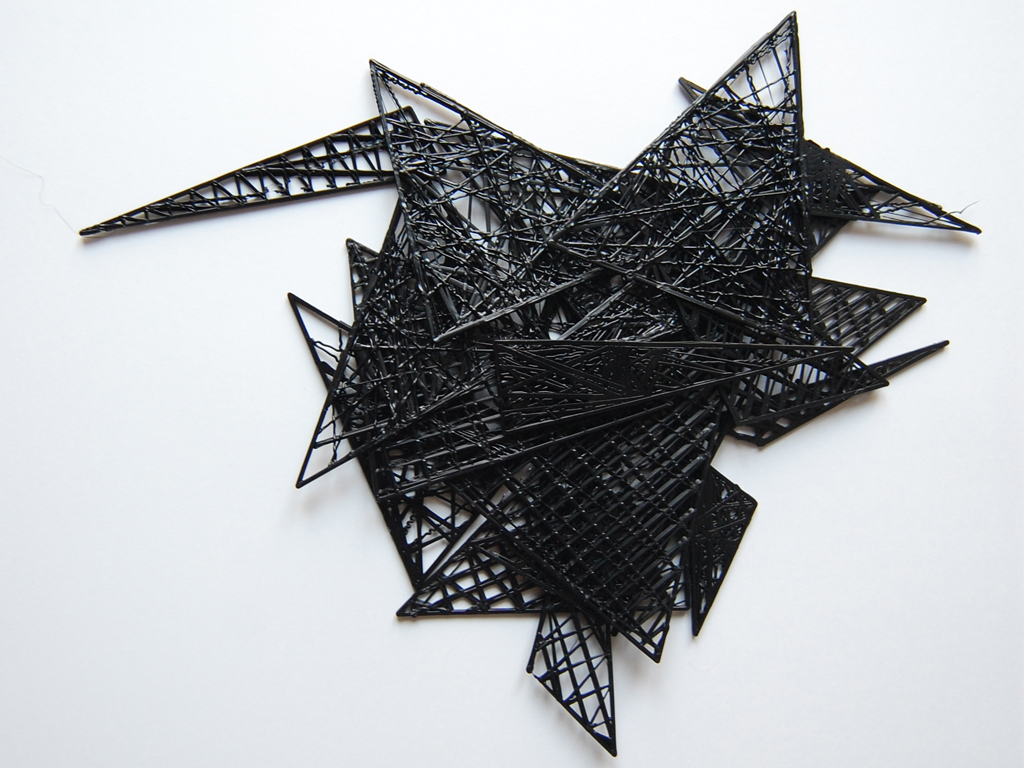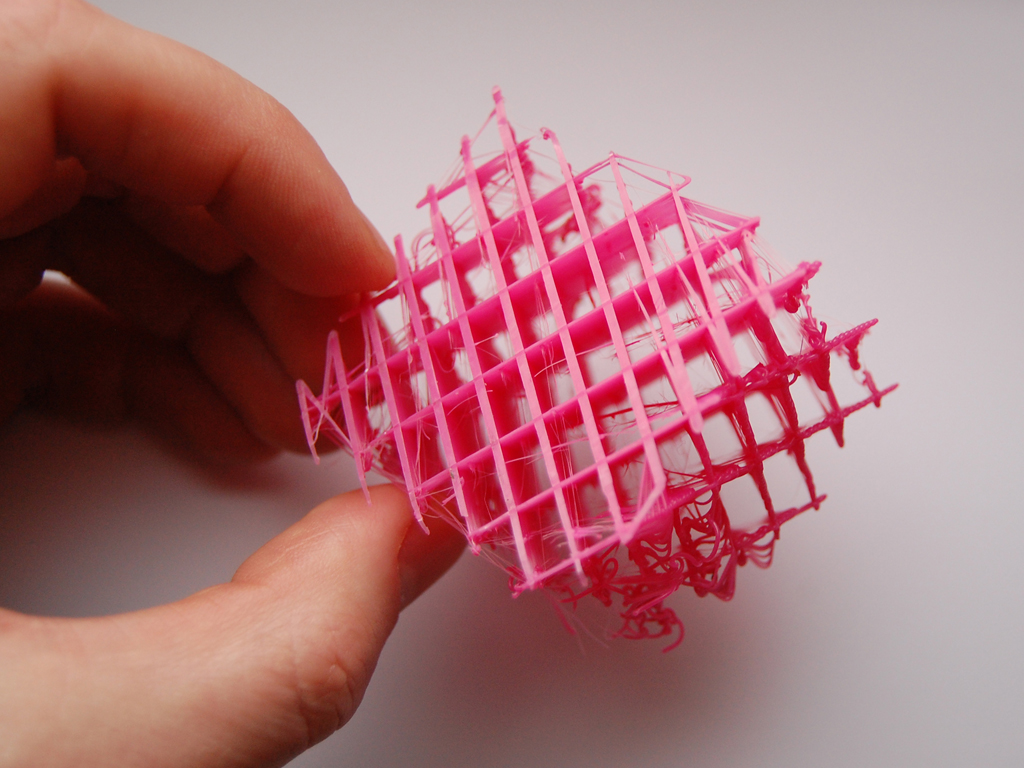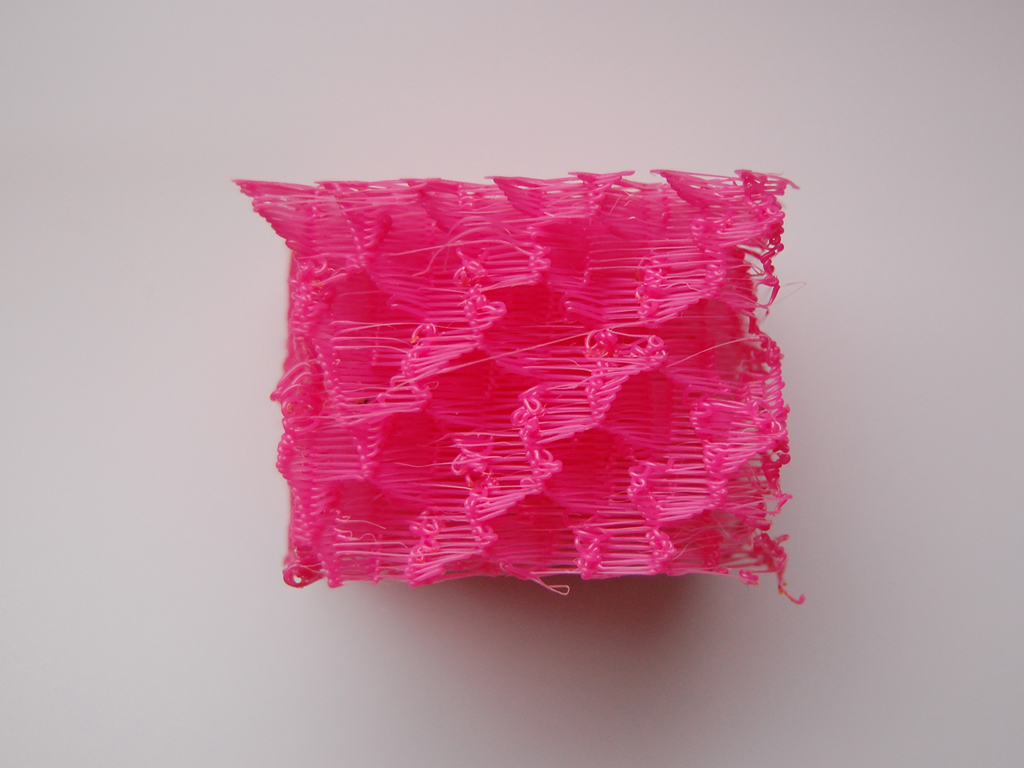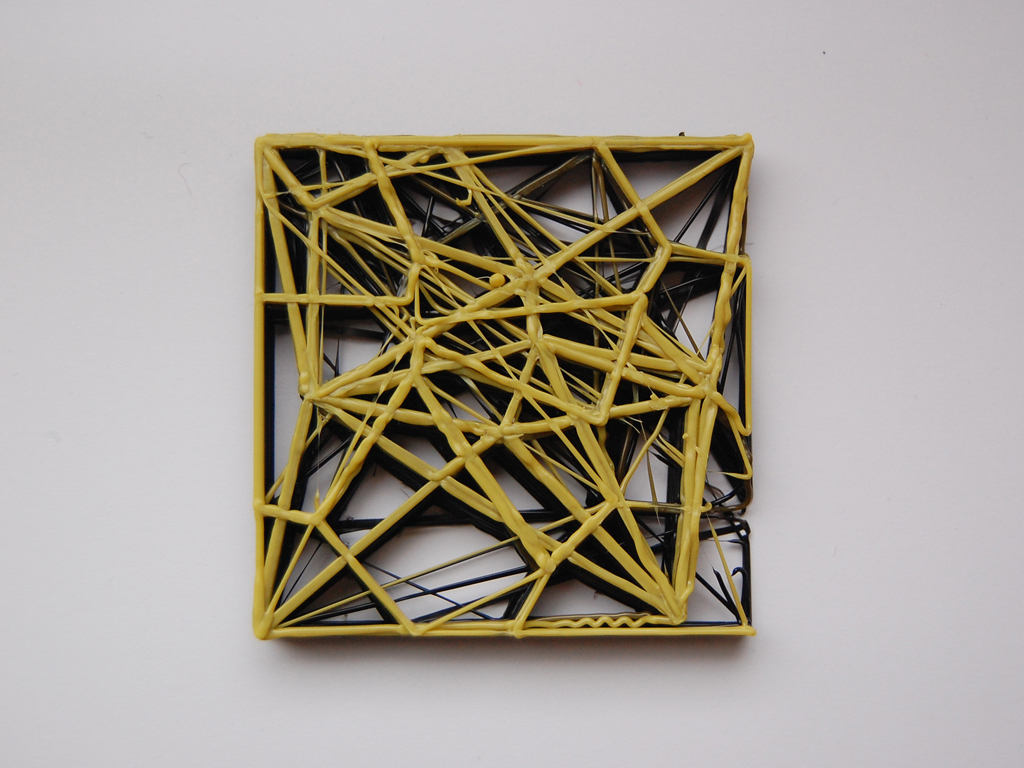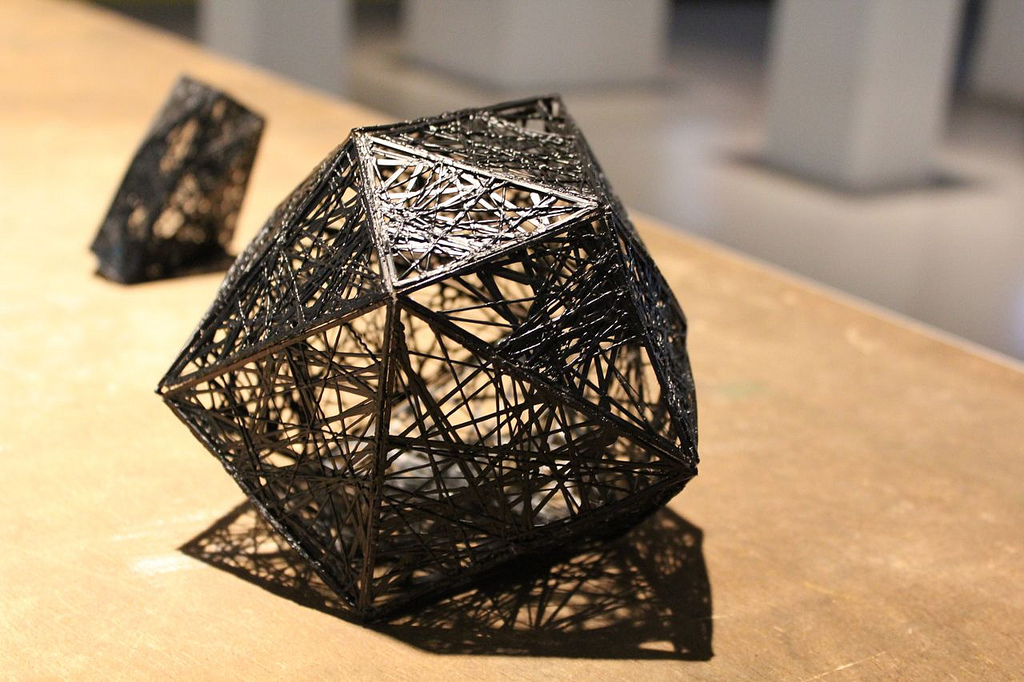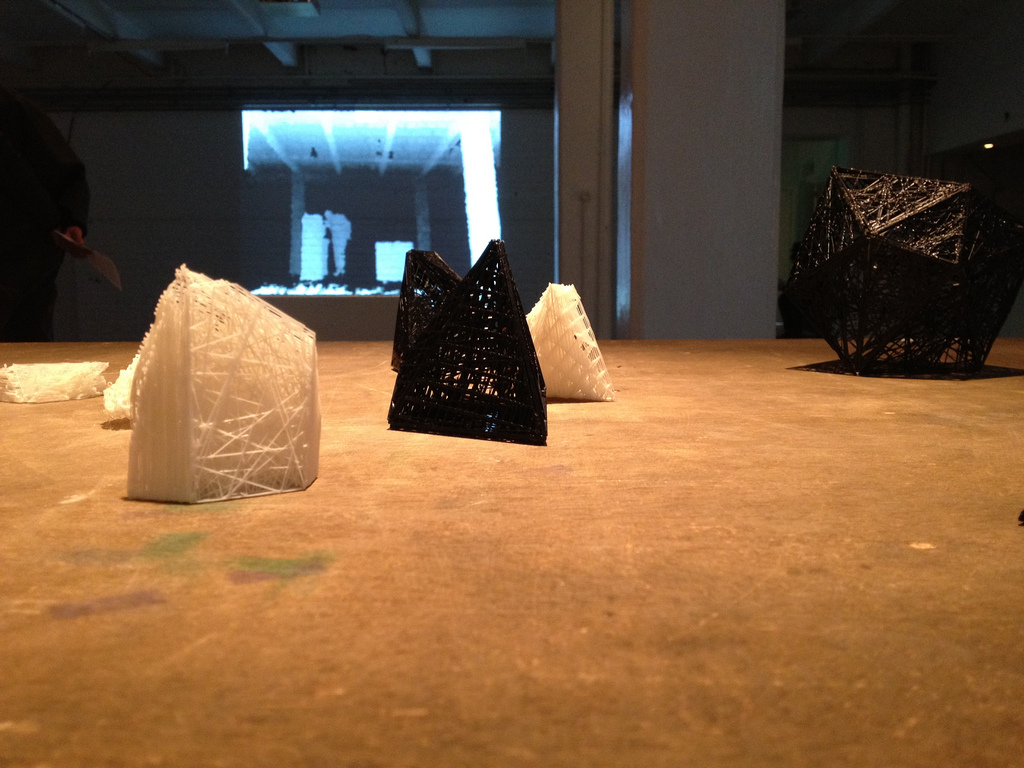Corneel Cannaerts
"Even though the constant search for complete transparency brings newer, ‘better’ media, every one of these new and improved technologies will always have their own fingerprints of imperfection. While most people experience these fingerprints as negative (and sometimes even as accidents) I emphasize the positive consequences of these imperfections by showing the new opportunities they facilitate." *
This projects explores traits - or fingerprints - introduced by low-cost 3D printing driven by computation. Writing code and digital fabrication are not neutral design media - i.e. they facilitate modes of thinking and making and introduce a form and degree of mediation.
For this project I generated G-code directly from processing instead of using a mesh and replicator G or another program to do the translation. Talking directly to the machine allows you to not only control the overall geometry or form of an object but also the toolpaths and process of making an object.
A first series of tests explored different algorithms for generating G-code and the resulting material structures within a simple cube. In a second series of objects these were used to build panels, assembled into objects derived from low polygon meshes.
* Rosa Menkman in Glitch Studies Manifesto
Ce projet explore l’esthétique particulière de l’impression 3D à bas prix et des processus informatiques qui y sont liés. En général, l’artiste ou le designer crée d’abord un modèle 3D de l’objet à imprimer. Un logiciel dédié va ensuite le transformer en une série d’instructions compréhensibles par la machine - un langage appelé G-code.
Pour son projet Encoded Matter, Corneel Cannaerts a décidé de se passer de cette étape de conversion. Ainsi, il s'adresse directement à la machine, contrôlant non seulement la forme finale, mais également le processus de création.
Premièrement, l’artiste a testé différentes structures matérielles pour un objet simple: un cube. Dans une seconde série, il a créé différentes surfaces géométriques qu’il a assemblées en forme polygonales tridimensionnelles.
An archive : 1999-2010-2019
This page is an archive of the iMAL website that operated between 2010 and 2019. It compiles activities and projects made since 1999.
For our most recent news and activities, please check our new website at https://imal.org


